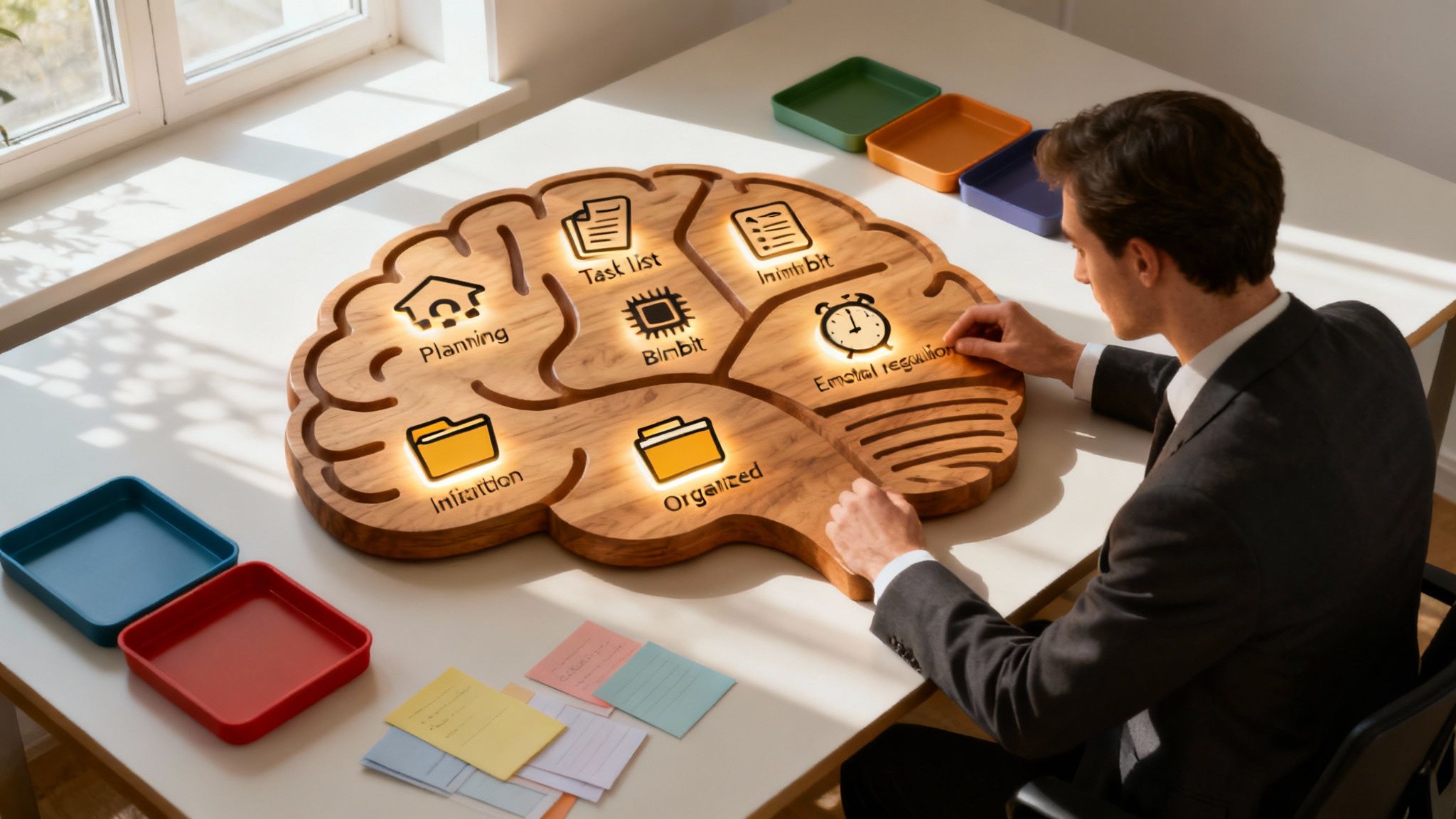Many adults with ADHD consider the inability to advance goals through timely action the most significant life challenge.
Some refer to this inability as "intention-deficit disorder" (IDD). Though not an official medical diagnosis, IDD is a helpful way to frame the associated executive function deficits.
This article will explore IDD, how it impacts those with ADHD, and methods to help bridge the gap between intention and action.
Too long; didn't read
- Intention deficit disorder is the inability to advance goals through timely action caused by a separation in the brain between intention and action.
- People with IDD take action that doesn't have meaning or purpose instead of working toward more important goals.
- Bridging the gap between intention and attention include externalizing time, bringing the future forward, encouraging sustained motivation, and CBT.
What is intention-deficit disorder?
Dr. Russell Barkley, Ph.D., defines "intention-deficit disorder," or IDD, as the difficulty of people with ADHD to accomplish their goals and struggle to transform their intentions into actions. People with IDD choose to complete less meaningful tasks first.
Similarities in IDD and ADHD
Executive function is the mental skill that allows a person to follow directions, be flexible on automated tasks, and exhibit self-control.
Those who lack the executive functioning ability, or executive dysfunction, have issues with:
- Emotional regulation
- Following directions
- Forgetfulness
- Inattention
- Impulsivity
The brain's frontal lobe controls executive functions. It uses knowledge in the brain's rear lobe to make decisions and think in future terms.1 In those with ADHD, these two brain lobes communicate poorly.
People with ADHD may appear unable or unwilling to complete tasks caused by the brain separating their intentions from their actions. Similarly, executive function deficits also cause what's known as "time blindness," making someone struggle to organize their behavior across time.2
Those with ADHD may procrastinate until something is looming before taking action and react to a time crisis by rushing to complete tasks. It's not that their intentions lack actions, so much as their efforts lack intentions.
Bridging the gap between intention and attention
Executive dysfunction causes a decision delay, or analysis paralysis, and may be perceived as voluntary laziness or poor time management. The best way to address executive dysfunction disorders involves targeting the point of performance and changing the ADHDer's environment.
1. Externalize time
Internal cues in a person with ADHD are unreliable. Externalizing time through visual timers, calendars, or whiteboards can better guide behavior.
Don't be intimidated by overwhelming tasks and instead try to organize your to-do lists incrementally:
Brain dump
Write down everything on your mind! The brain dump list contains everything you need to do and is a place to store any potentially overwhelming ideas. Leaving them on the brain dump will help clear your mind to focus on your current task.
To-do list
Use a daily to-do list to budget today's time. Don't clutter this with everyday tasks. Instead, use it for unusual tasks you want to accomplish today, such as "take my car for an oil change at lunch," "pick up my W-2," or "go by the post office to buy stamps."
Set realistic time frames
Large, open-ended tasks like "organizing medical receipts for taxes" can feel daunting. Instead, list "organize my medical receipts for taxes for 30 minutes." Knowing exactly how much time you have for the task will help align attention with your intention and reduce distractions.
If you succeed, you'll either get thirty minutes of good organizing work done, and/or you'll learn how long it takes for the next time. If you discover that more than 30 minutes is needed to manage your medical receipts, just set the next task for another time. You've still scored a win.
2. Bring the future forward
For complex or long-term goals, bring some parts of the future forward and push some back. Try dividing larger goals into smaller, incremental, and successive steps.
Instead of listing "work on my tax return," list specific actions separately:
- Download the tax preparation software
- Enter my W-2 into the software
- Organize my medical receipts
3. Encourage sustained motivation
Scheduling shorter work periods with breaks in between, rewarding yourself immediately, and having accountability partners are all effective ways to maintain motivation.
4. Cognitive behavioral therapy
Psychosocial treatments designed for adults with ADHD, particularly cognitive behavioral therapy (CBT), focus on helping with executive functioning in day-to-day life.3
Rather than an ADHDer endlessly trying to organize or stop procrastinating, a skilled cognitive behavioral therapist can help develop templates for ADHDers to understand the pivot points that get them off task.







